Hiwatt amplifiers are a pillar in the history of sound amplification, and have been instrumental in the sound of many iconic rock bands. Hiwatt’s story begins in the UK in the 60s.
Dave Reeves, the founder of Hiwatt, was an amplifier technician who began his career working for other companies, such as Sound City and Mullard, where he acquired much of his skills and knowledge in the field of electronics and amplification. In 1966, Reeves founded Hylight Electronics and began building amplifiers under the Hiwatt brand.

Hiwatt amplifiers are known for their high build quality and their clean, powerful sound, which can maintain clear definition even at very high volumes. Hiwatts use high-quality components and meticulous hand-wiring, often done using the “point-to-point” technique, which is still highly prized by sound purists today.
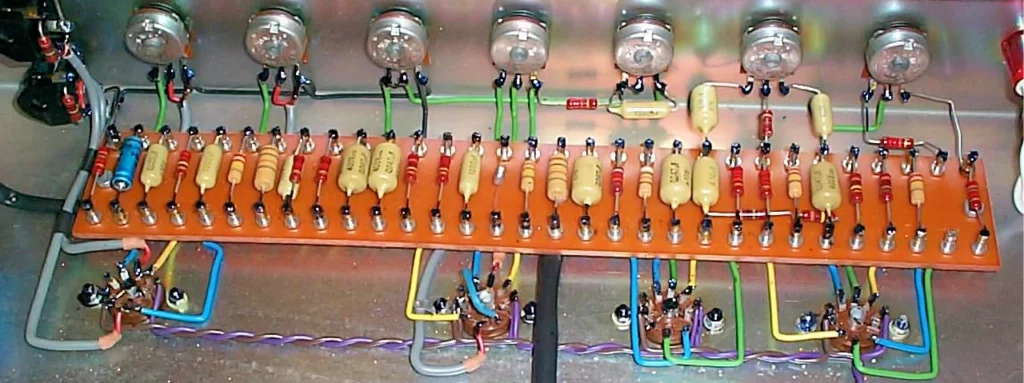
Hiwatt holds a special place in the history of rock and amplification in general. Here are some facts about this famous brand:
Connection to The Who: Pete Townshend of The Who played a pivotal role in putting Hiwatt amps in the spotlight. Townshend was known for his powerful sound and for smashing guitars on stage, and the sturdy Hiwatt amps were able to withstand his energetic playing style.
Craftsmanship: Hiwatt amplifiers are renowned for their build quality. In the early years, most amplifiers were assembled by hand using the “point-to-point” wiring technique, which is notoriously laborious but is also known for producing high-quality sound and durability.
Loss and Rebirth: Dave Reeves, the founder of Hiwatt, tragically passed away in 1981 at just 38 years old. His death led to a period of uncertainty for the company, which has undergone various changes in ownership over the years. Despite this, the Hiwatt brand has survived and continues to produce high-quality amplifiers.
The British Sound: Hiwatt amplifiers are often associated with the “British Sound”, which is characterized by a clear, defined and powerful sound with a distinctive frequency response.
Relive the 70s: Hiwatt keeps the tradition alive by offering a “Vintage” series that seeks to faithfully replicate amplifiers produced in the 70s, providing enthusiasts and collectors with the opportunity to own a piece of rock’n’roll history.
Hiwatt amplifiers have been produced in various models with different technical characteristics and specifications over the years. Here is some information about the models that have contributed the most to the history of the brand:
Hiwatt DR103 – Custom 100:
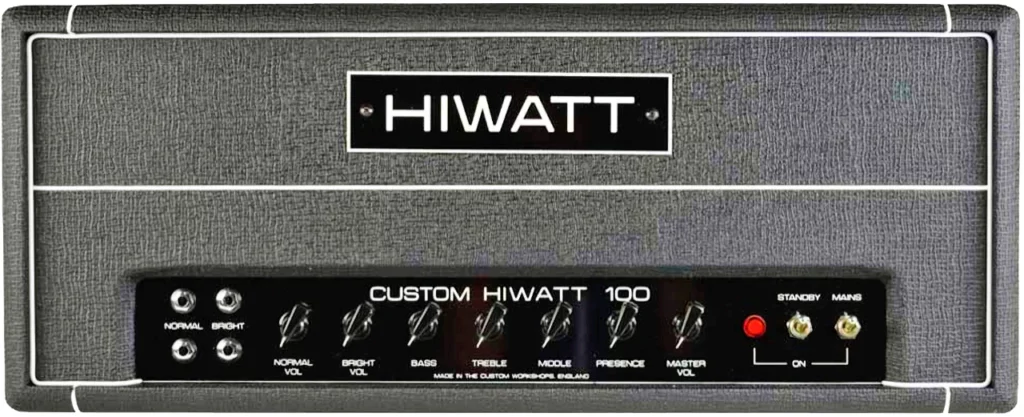
The Hiwatt DR103, also known as the Hiwatt Custom 100, is one of the most iconic guitar amps in rock and Hiwatt history.
General features:
Model: DR103 (Custom 100)
Typology: Tube Electric Guitar Amplifier
Production: Started in the ’60s
Use: Appreciated for both live and studio use
Technical Specifications:
Power: 100 Watt RMS
Power Tubes: 4 x EL34
Preamp & Phase Tubes: 4 x ECC83 (12AX7)
Channels: 2 (Normal e Brilliant)
Normal Channel Controls: Volume, Bass, Mid, Treble
Brilliant Channel Controls: Volume, Bass, Mid, Treble
General Controls: Presence
Impedance: Selector switch for 4, 8, 16 ohms
Connectors: Standard Hi and Lo inputs for each channel
Construction: Hand point-to-point wiring (in historical versions and high-end reissues)
Cabinet: Made of wood, covered in black vinyl canvas and front grille
Strengths:
Sound: Known for its clean, clear, and powerful sound
Construction: Handcrafted and high-quality components
Versatility: Capable of delivering clear and crystal-clear sounds, but also powerful and sustained when pushed into volumes
History and Use:
Era: It was used extensively during the 70s and continued to be enjoyed in the following decades.
Applications: Well suited for genres such as rock, blues, and in general situations where a good dose of volume and clarity is required.
The Hiwatt DR103 Custom 100 is widely recognized for its reliability and excellent sonic response, making it a popular choice among professional musicians for over fifty years. While the basic design has remained relatively unchanged over the years, there have been various editions and slight changes over various production periods.
Hiwatt DR504 – Custom 50:
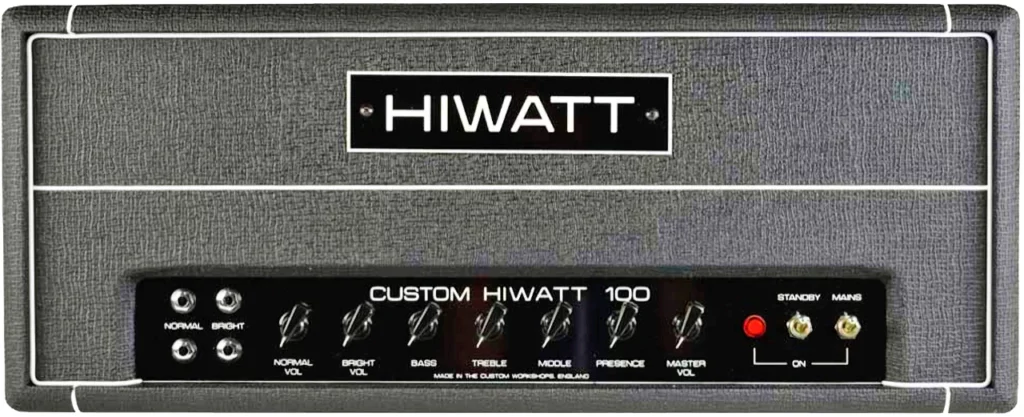
The Hiwatt DR504, also known as the Custom 50, is another iconic amplifier in the Hiwatt family, particularly known for its rich, clean sound, as well as its robust, high-quality construction. Here are some specs and technical features:
General features:
Model: DR504 (Custom 50)
Typology: Tube amplifier for electric guitar
Production: Started in the ’60s
Specifications:
Power: 50 Watt RMS
Power Tubes: 2 x EL34
Preamp & Phase Tubes: 4 x ECC83 (12AX7)
Channels: 2 (Normal e Brilliant)
Normal Channel Controls: Volume, Bass, Mid, Treble
Brilliant Channel Controls: Volume, Bass, Mid, Treble
General Controls: Presence
Impedance: Selector switch for 4, 8, 16 ohms
Connectors: Standard Hi and Lo inputs for each channel
Construction: Hand point-to-point wiring (in historical versions and high-end reissues)
Cabinet: Made of wood, covered in black vinyl canvas and front grille
Strengths:
Sound: Rich and clean, maintaining clarity even at high volumes
Construction: Handcrafted, with high-quality and robust components
Versatility: It excels in clean tones, but can also provide a nice oomph when pushed
History and Use:
Artists: Guitarists such as Steve Hackett (Genesis) are known to have used the DR504 at various stages of their careers.
Applications: Great in live and studio contexts, being able to provide a clean and powerful sound in various musical genres.
The Hiwatt DR504 Custom 50 sounds a little less powerful than its “big brother” DR103, but retains that clarity and character that Hiwatt is so known for, all in a lighter, but still incredibly capable cabinet. Its features make it a great amp for a wide range of musical situations and styles.
Hiwatt DR201 – Bass 200:
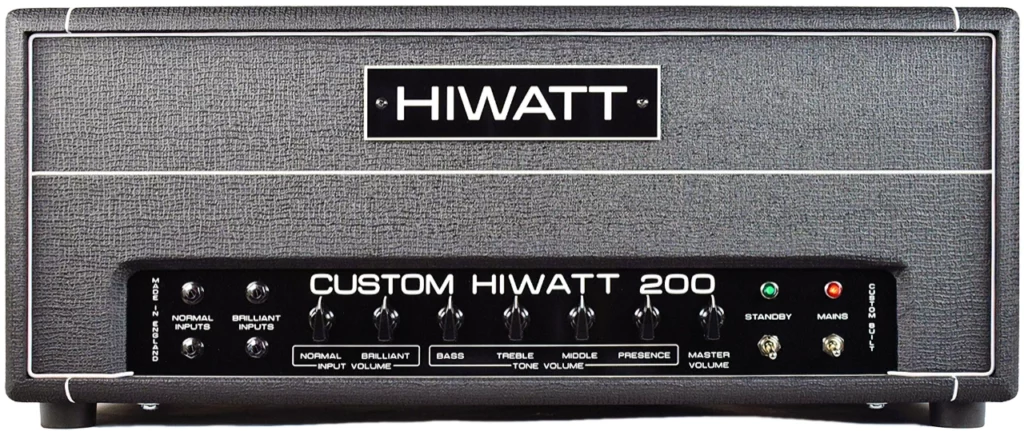
The Hiwatt DR201, also known as the Bass 200, is a powerful, high-quality amplifier designed specifically for electric basses. It has often been praised for its clean, clear, and powerful sound. Here are some specifications and technical characteristics of the amplifier:
General features:
Model: DR201 (Bass 200)
Typology: Tube amplifier for electric bass
Production: Originally launched in the 70s
Specifications:
Power: 200 Watt RMS
Power Tubes: 6 x KT88
Preamp & Phase Tubes: 4 x ECC83 & 1 x ECC81
Channels: 2 (Normal e Brilliant)
Normal Channel Controls: Volume, Bass, Mid, Treble
Brilliant Channel Controls: Volume, Bass, Mid, Treble
General Controls: Presence
Impedance: Selector switch for 4, 8, 15 ohms
Connectors: Standard Hi and Lo inputs for each channel
Construction: Hand point-to-point wiring (in historical versions and high-end reissues)
Cabinet: Made of wood, covered in black vinyl canvas and front grille
Strengths:
Sound: Enormously clean and clear, with a very defined and powerful bass response.
Construction: Handcrafted, with high-quality components and a solid structure.
Versatility: Suitable for various styles of music, from jazz to rock.
History and Use:
Artists: John Entwistle (The Who) is one of the most well-known bassists to have used the DR201, giving his sound a massive presence in live shows in the 70s.
Applications: Its power and clarity make it suitable for both live and studio use.
The Hiwatt DR201 is renowned for being able to deliver a powerful and defined sound that manages to stay clean even at very high volumes, making it a great choice for bassists who need an amplifier capable of holding powerful and clear sounds in any context.
Hiwatt SA212 – Combo 50W:
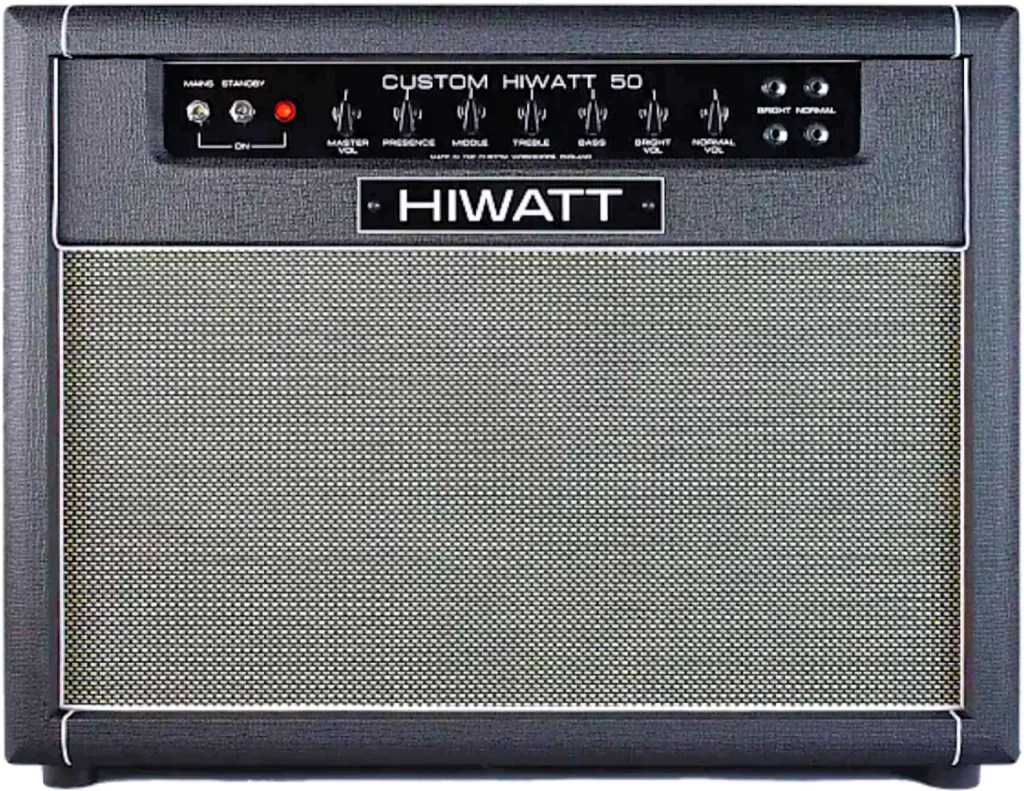
The Hiwatt SA212 is a combo amp, known for its powerful and defined sound, as well as its high-quality construction. Although specific models may vary slightly, here are some general technical characteristics and specifications of the Hiwatt SA212:
General features:
Model: SA212 (50W Combo)
Typology: Tube Combo Amp for Electric Guitar
Production: Started in the ’60s and ’70s
Specifications:
Power: 50 Watt RMS
Power Tubes: 2 x EL34
Preamp & Phase Tubes: 4 x ECC83 (12AX7)
Speakers: 2 x 12″ (usually with Fane or Celestion cones, depending on period or model)
Channels: 2 (Normal e Brilliant)
Normal Channel Controls: Volume, Bass, Mid, Treble
Brilliant Channel Controls: Volume, Bass, Mid, Treble
General Controls: Presence
Connectors: Standard Hi and Lo inputs for each channel
Construction: Hand point-to-point wiring (in historical versions and high-end reissues)
Cabinet: Made of wood, covered in black vinyl canvas and front grille
Strengths:
Sound: Rich and warm, with clear definition even at high volumes.
Portability: As it’s a combo, it combines the amplifier and speakers into one unit, making it more practical for transport than a separate half-stack.
Construction: Handcrafted and high-quality components.
History and Use:
Artists: David Gilmour (Pink Floyd) is known for using various Hiwatt models, including combos, at different times in his career.
Applications: Because of its combination of portability and powerful sound, the SA212 is versatile for both live and studio use.
The Hiwatt SA212 is an amplifier that combines the portability of a combo with the powerful and authentic Hiwatt sound, making it a popular choice among guitarists who need an amplifier suitable for various situations while maintaining high sound quality at all times.
CONCLUSIONS:
Hiwatt amplifiers were used by a number of celebrated guitarists, especially during the 60s and 70s, contributing to the sound of many rock bands. Here are some examples:
Pete Townshend (The Who):
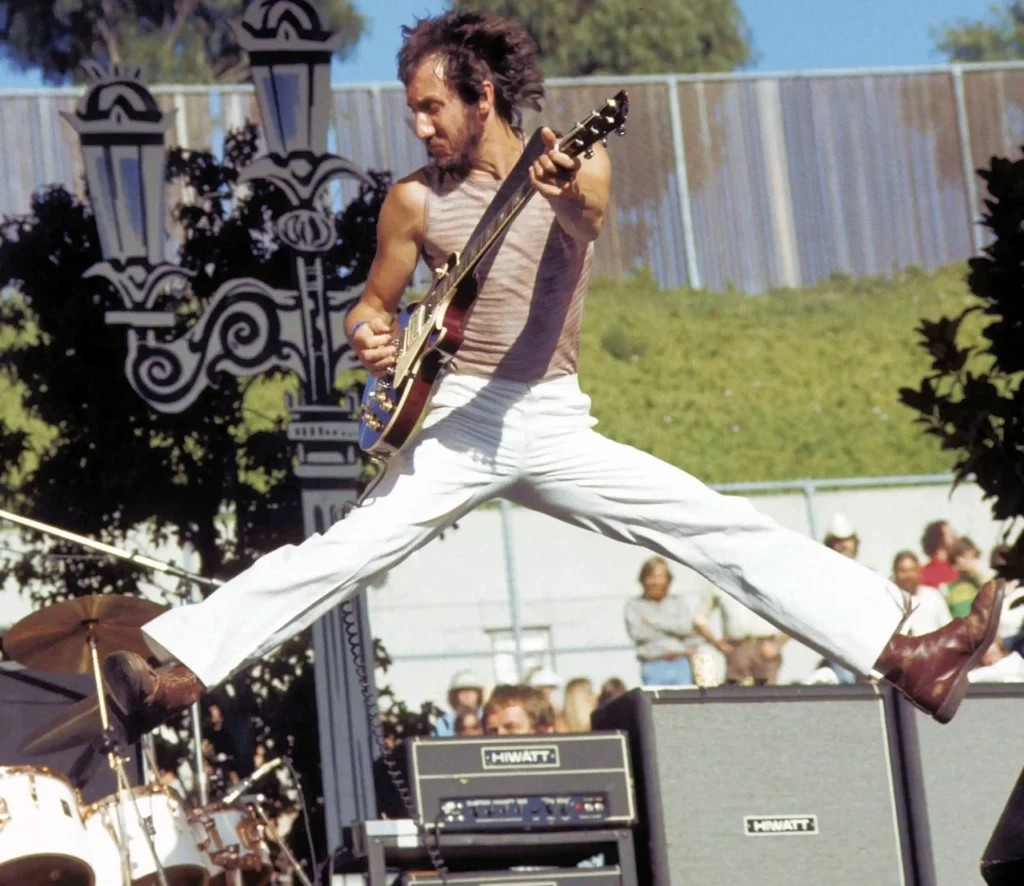
- Model: Mainly DR103 Custom Hiwatt 100.
- Notes: Townshend has used Hiwatt for much of his career, contributing greatly to the brand’s popularity.
David Gilmour (Pink Floyd):
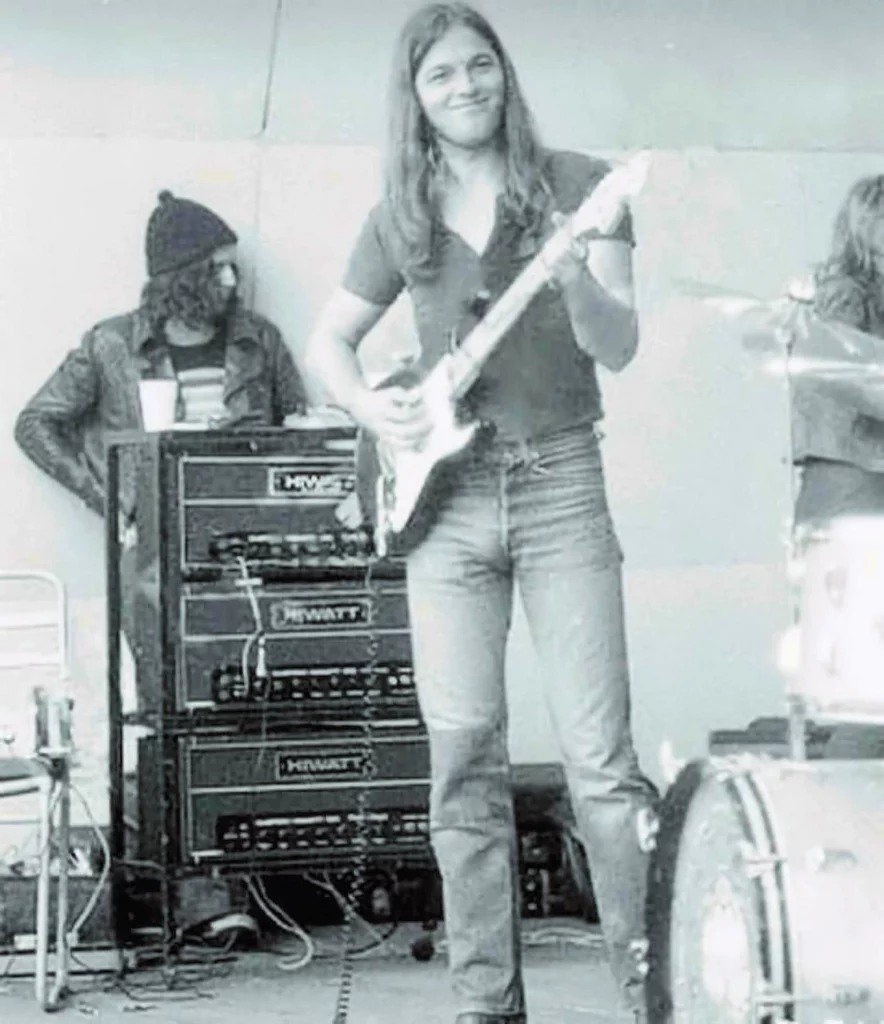
- Model: DR103 Custom Hiwatt 100 and SA212.
- Notes: Gilmour has used Hiwatt amps for many recordings and tours with Pink Floyd, appreciating their clean and powerful sound.
Jimmy Page (Led Zeppelin):
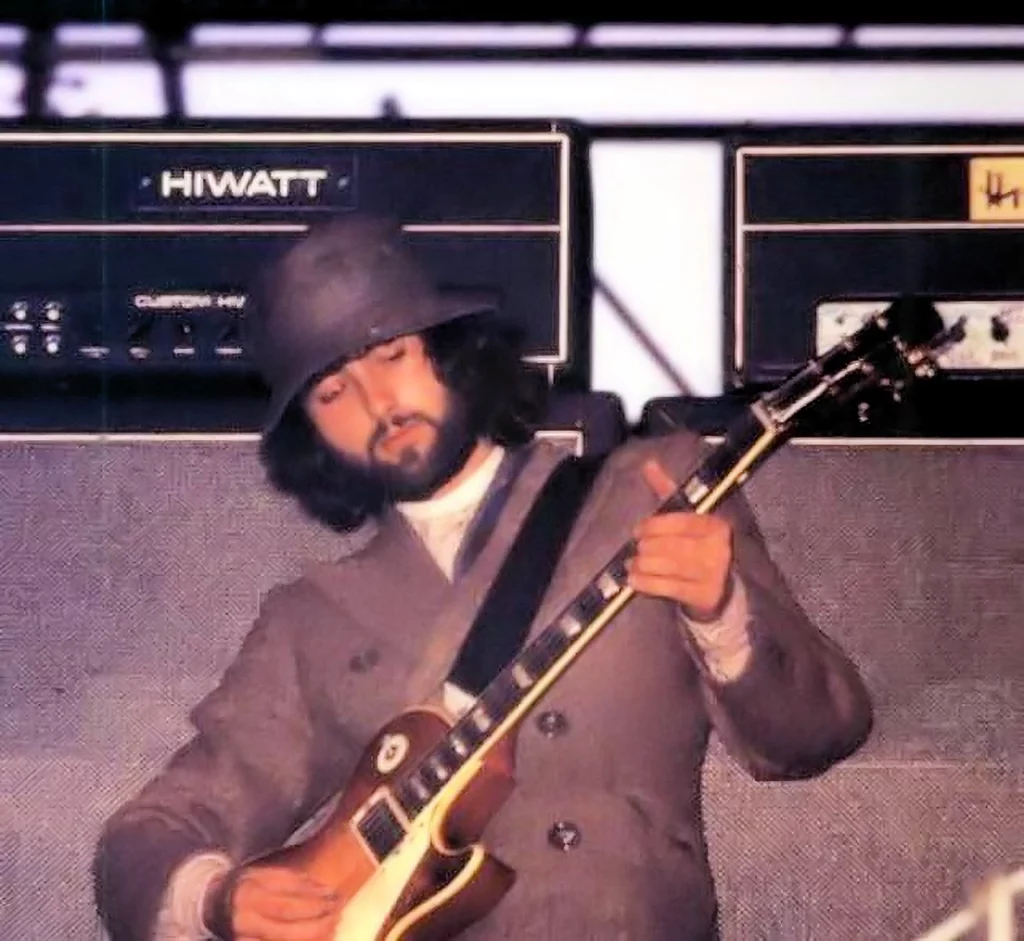
- Model: Hiwatt DR103 Custom 100, among others.
- Notes: Page used the Hiwatts along with other amps to achieve his signature sound.
John Entwistle (The Who):
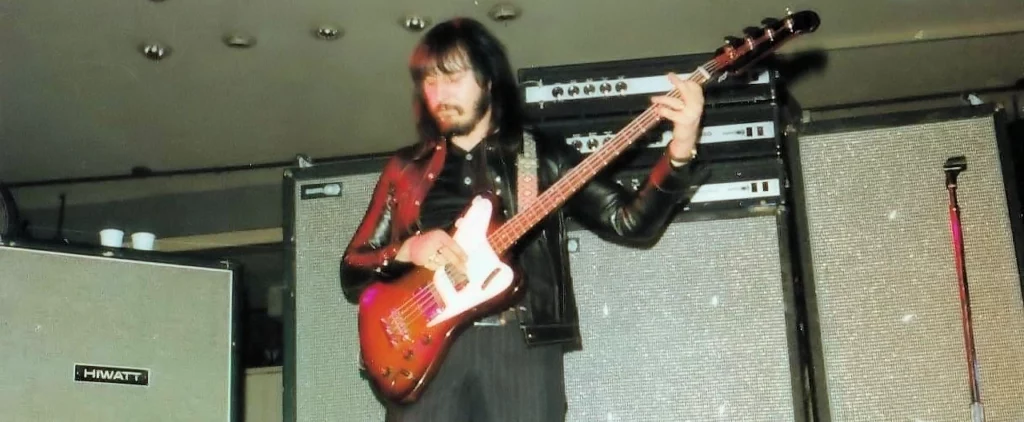
- Model: Hiwatt DR201 Bass 200 and other custom variants.
- Notes: Entwistle, although he was a bass player, is notable on the list as he often used Hiwatt for both studio recordings and live performances.
Alex Lifeson (Rush):
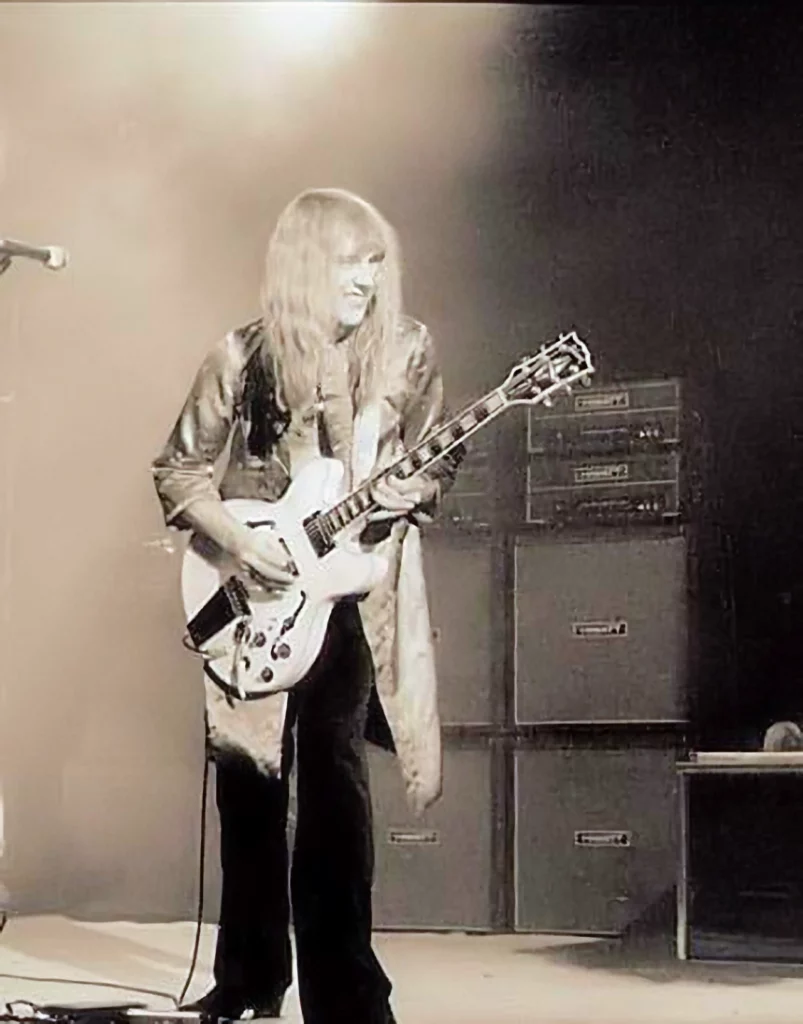
- Model: Hiwatt DR103 Custom 100, among others.
- Notes: Lifeson used Hiwatt amps in Rush’s heyday, providing the powerful guitar sound that featured on many of their classic tracks.
Ritchie Blackmore (Deep Purple):
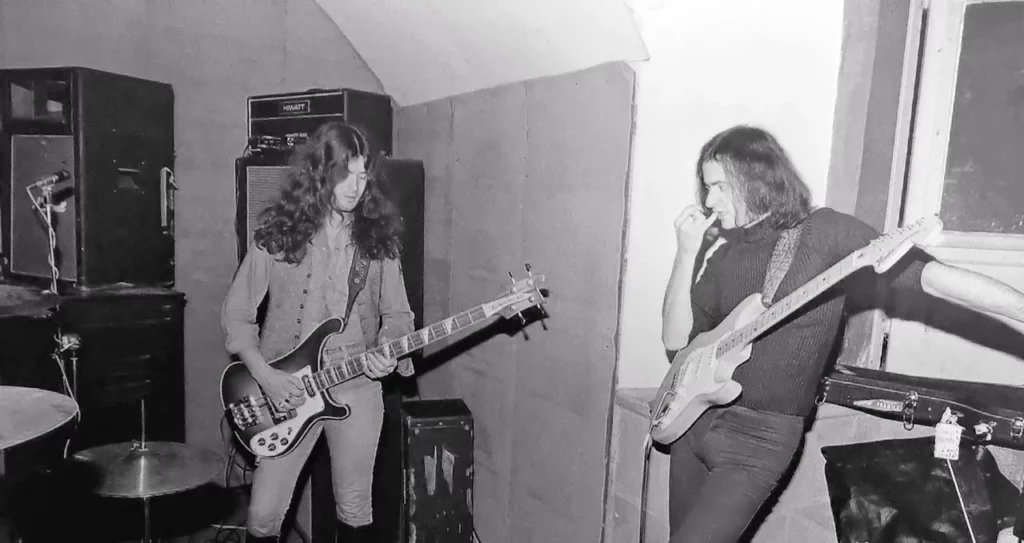
- Model: The DR103.
- Notes: Blackmore has used Hiwatt in his many performances and recordings, mixing the sound of the Hiwatts with other amps to create his signature tone.
Hiwatt amplifiers are known for their clean sound and their ability to maintain clarity even at high volumes, making them a popular choice among guitarists looking for a powerful and defined sound. Each guitarist has used Hiwatts in unique ways, integrating them into their setups to create memorable sounds.
Are you passionate about guitar amps? There is a section of the site dedicated to you!
And if you want to learn more about the subject, you just have to take a look at my videos on YouTube!

 it_IT
it_IT